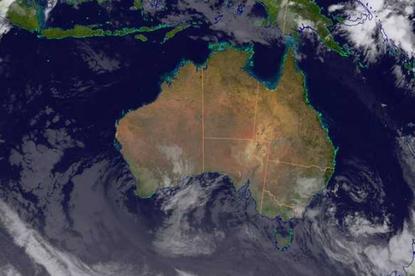Bureau of Meteorology to offer access to data via APIs
- 28 July, 2017 11:52

Source: Bureau of Meteorology
The Bureau of Meteorology is set to launch a number of APIs to deliver easier access to its data.
The Bureau currently makes key weather data available to third parties primarily through FTP.
The organisation offers free anonymous FTP access to a range to data including long-form forecasts for the states and territories, district forecasts, and coastal water forecasts as well as a range of maps and imagery.
It also offers real-time data services which require a paid subscription and are also delivered via FTP.
In addition, the organisation offers weather information via a number of RSS feeds as well as its websites and mobile apps.
In early June, the Bureau began the process of moving to an API-based model for sharing data, issuing a request for tenders seeking on-premise API gateway software to allow both internal and external clients access to its data.
The Bureau said it was seeking a scalable solution capable of dealing with large (up to 1GB) messages that supported LDAP and Microsoft Active Directory to identity internal users.
The gateway also needed to support quotas and per-user rate limiting. The Bureau indicated it was expecting 10TB of data and an estimated 30,000 transactions per day.
“Bureau of Meteorology’s mission is to provide trusted, reliable and responsive weather, water, climate and ocean services that enable a safe prosperous, secure and healthy Australia,” a spokesperson said.
“The Bureau provides this information over a variety of channels to the public, government departments, research partners and business partners.”
The organisation “will continue to support our existing customer and their investments in these channels,” the spokesperson said.
“We recognise that our customers are embracing the latest digital technology trends such as cloud and mobile computing with more personalised content.”
The Bureau is “investing in a range of digital technologies to support its customers including API management,” the spokesperson added.
“This investment will open the Bureau's data both internally and externally to innovative new digital channels. The data will be accurate, up to date, personalised and available when and where our customers choose to access it.”
In March the federal government announced it had adopted the International Open Data Charter as part of a push to provide better third-party access to the data held by departments and agencies.
The charter was originally launched in 2015, building on the 2013 G8 Open Data Charter. It is underpinned by six key principles covering access to government data and its release and use: Open by default; timely and comprehensive; accessible and usable; comparable and interoperable; for improved governance and citizen engagement; for inclusive development and innovation.
According to the government the charter aligns to its December 2015 policy statement that deemed data it held to be a “strategic national resource”.
Under the policy the government committed itself to an approach of open by default for non-sensitive data sets and to collaborating with researchers and the private sector to expand the use of government-collected data.
